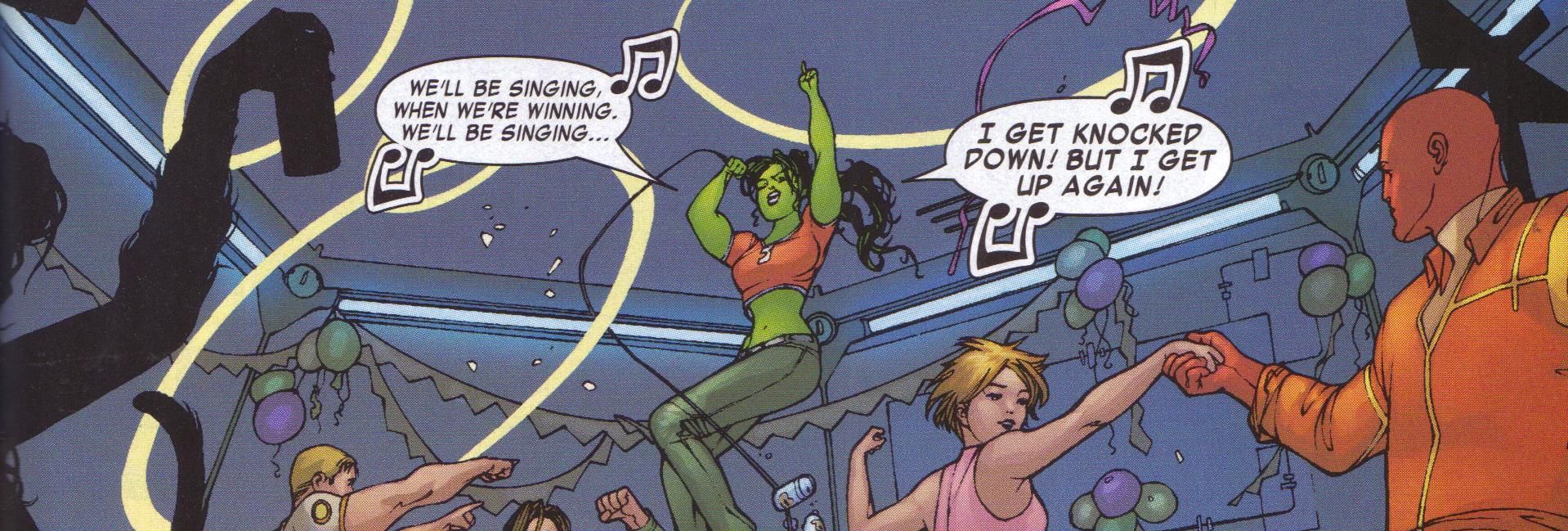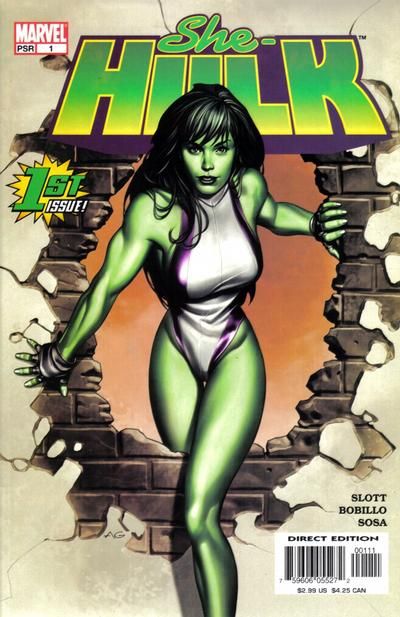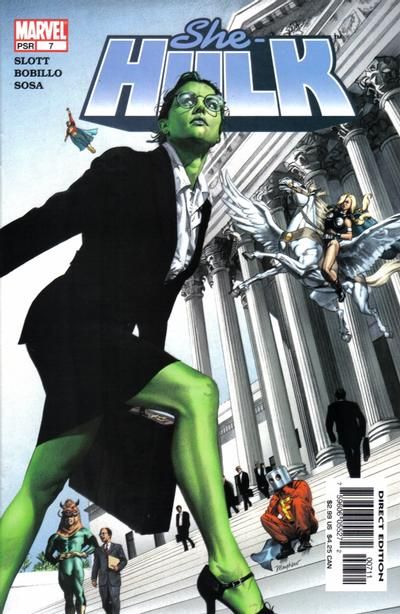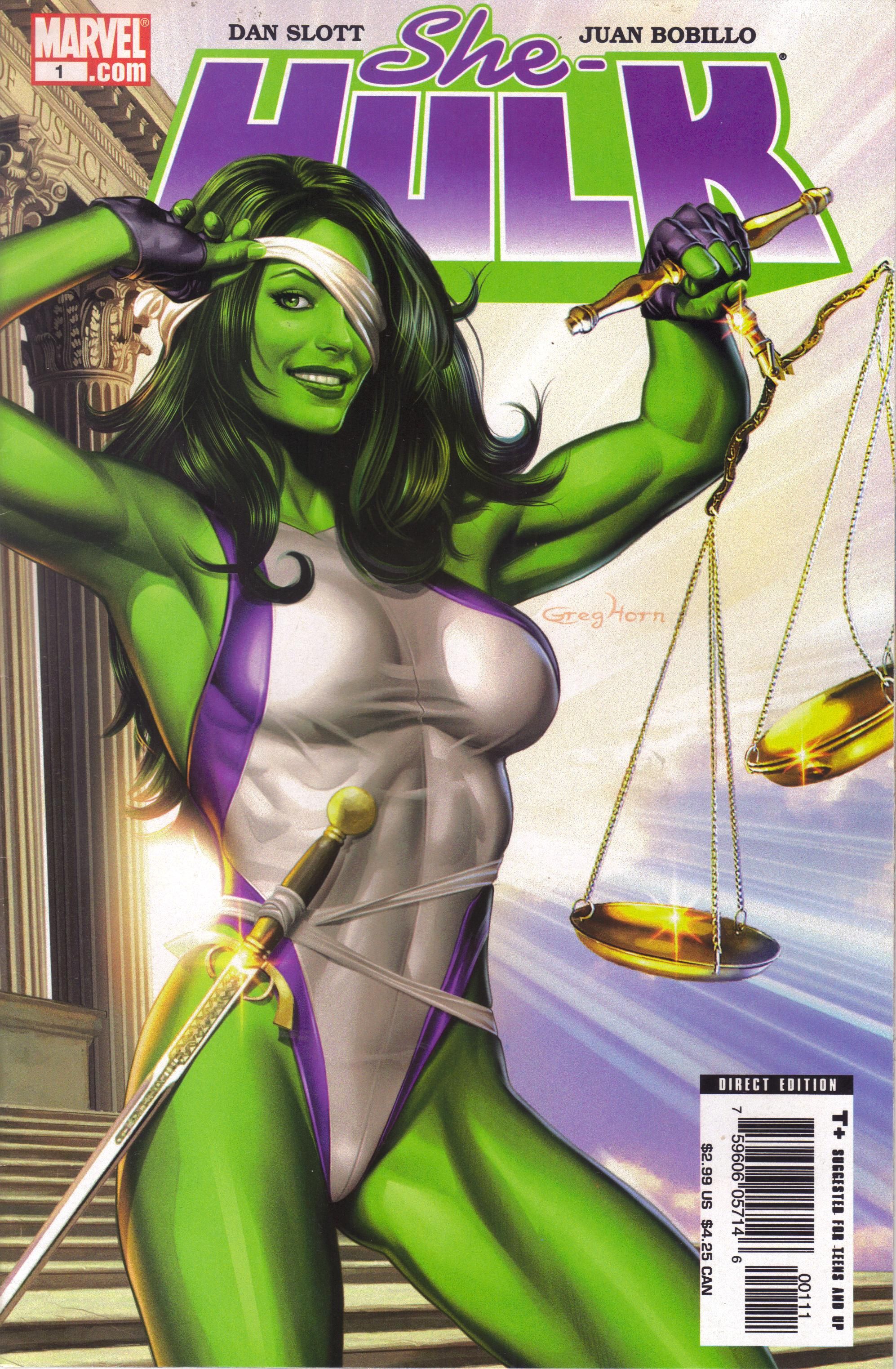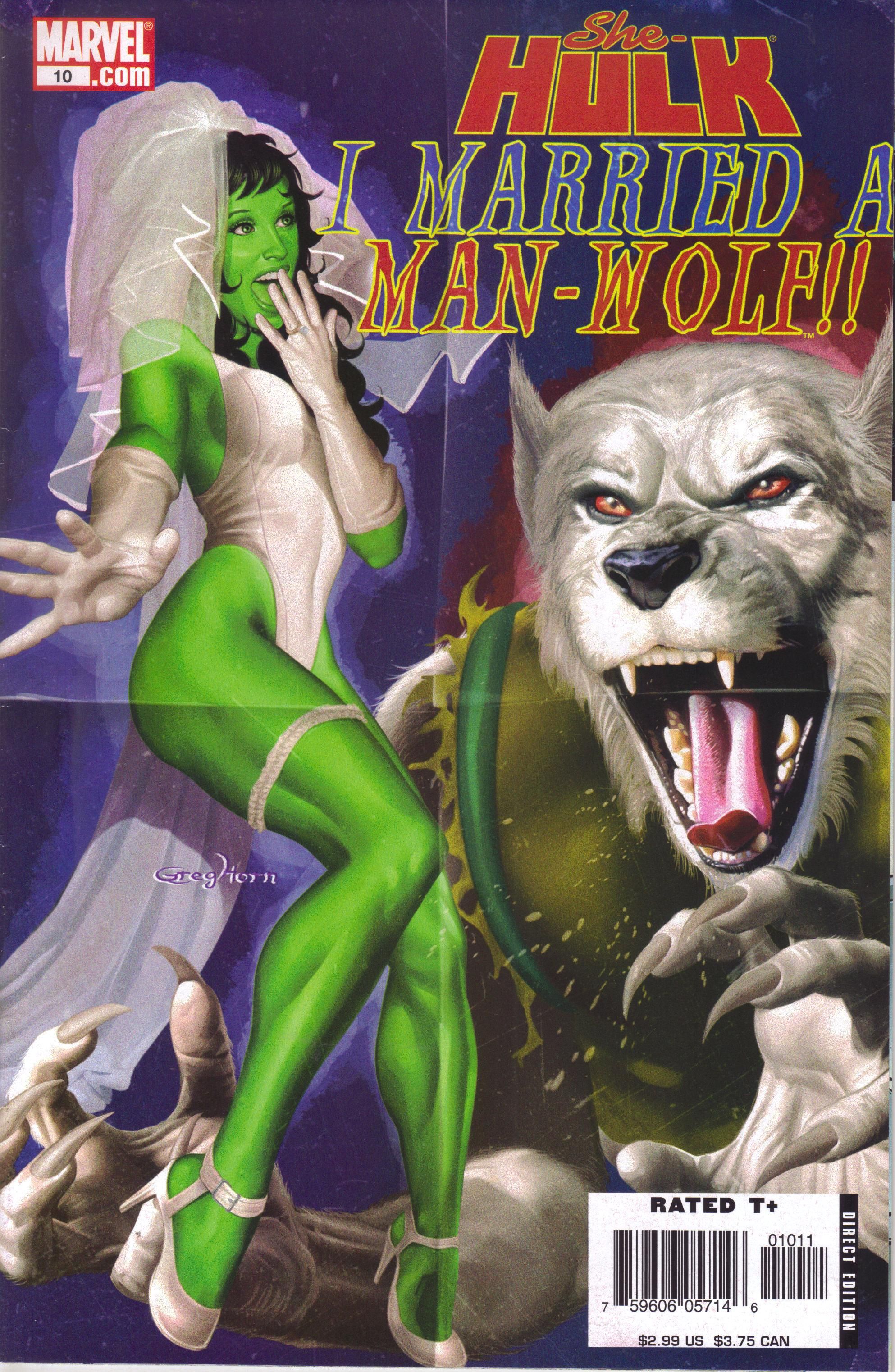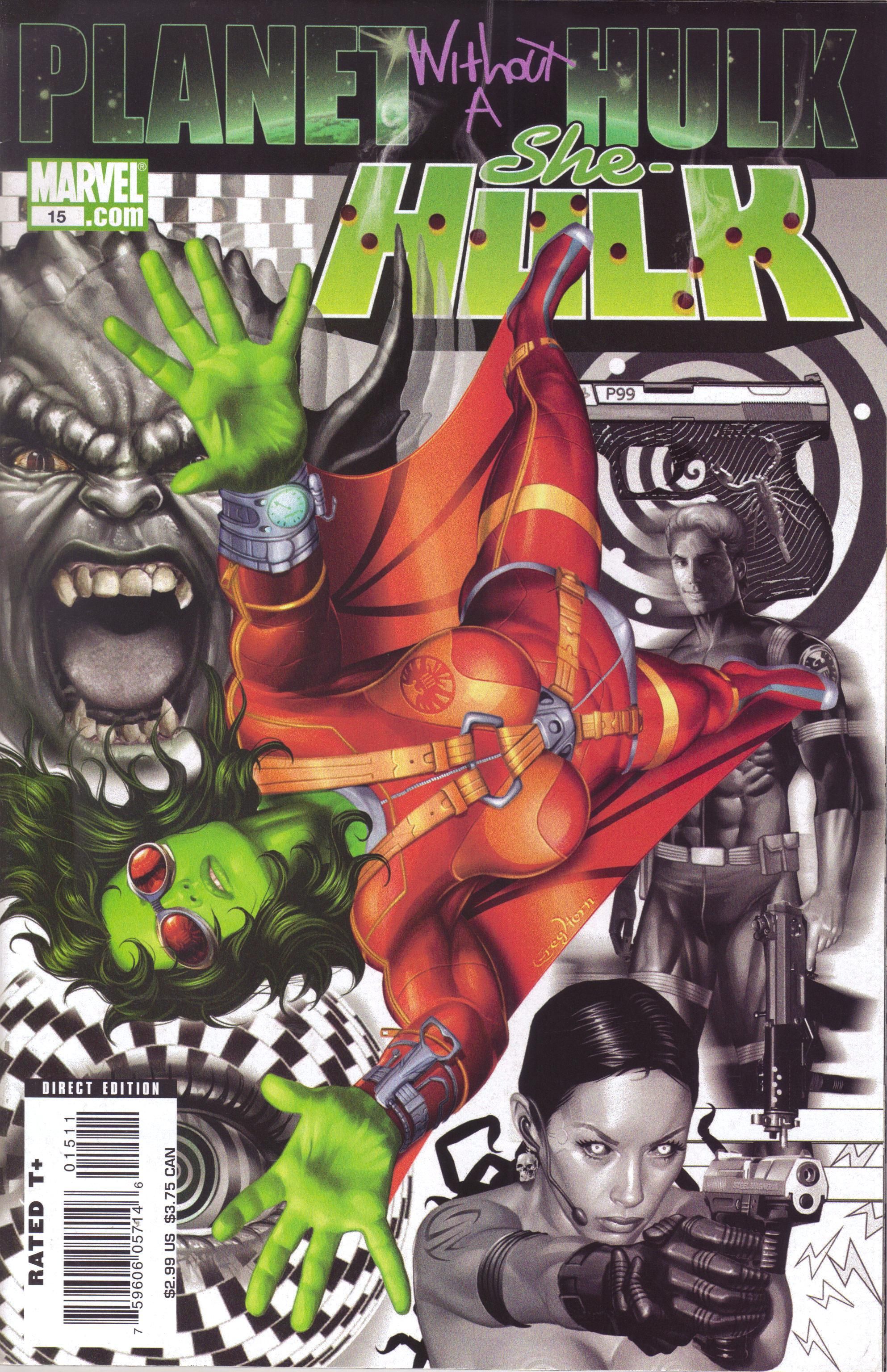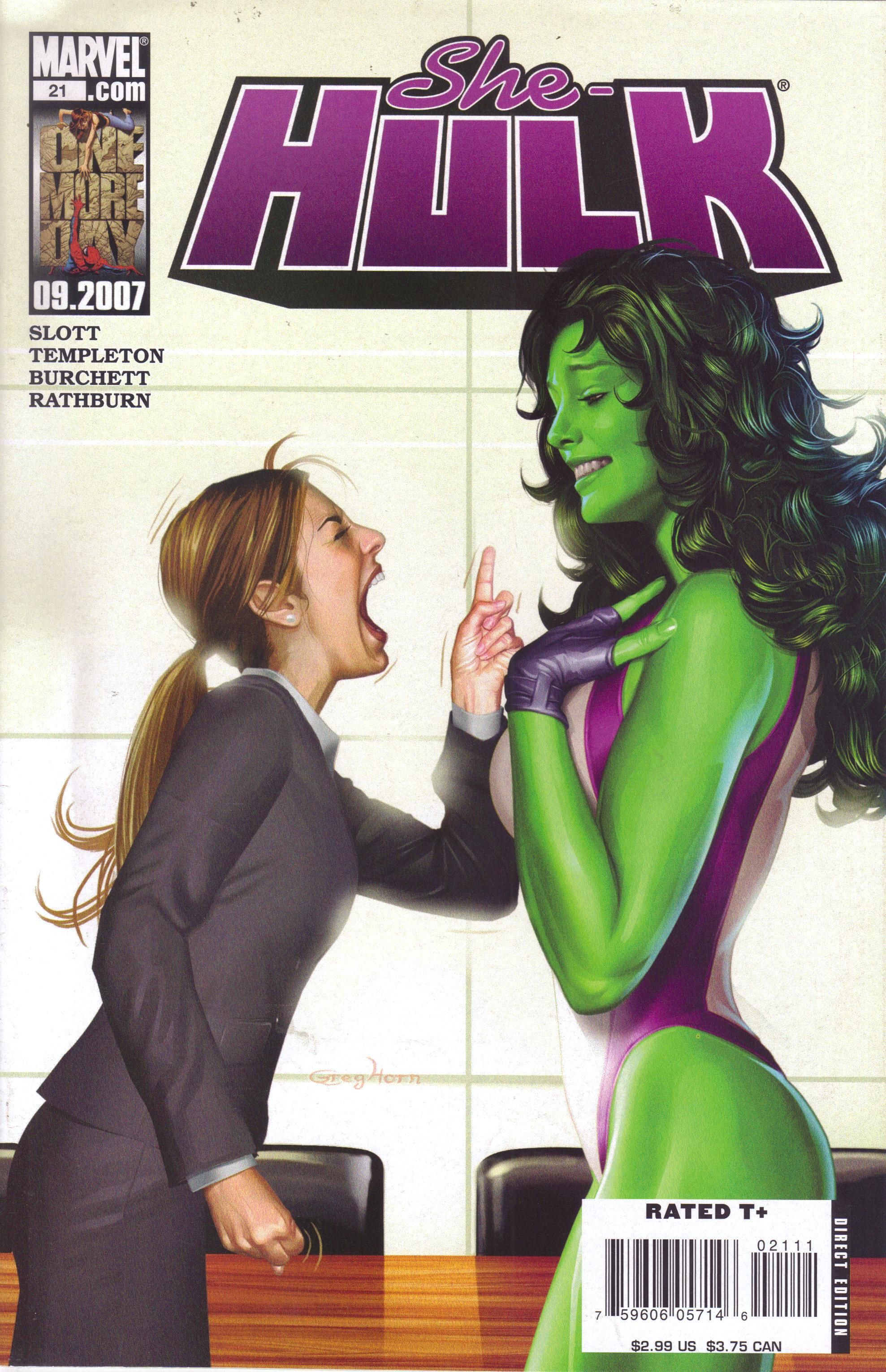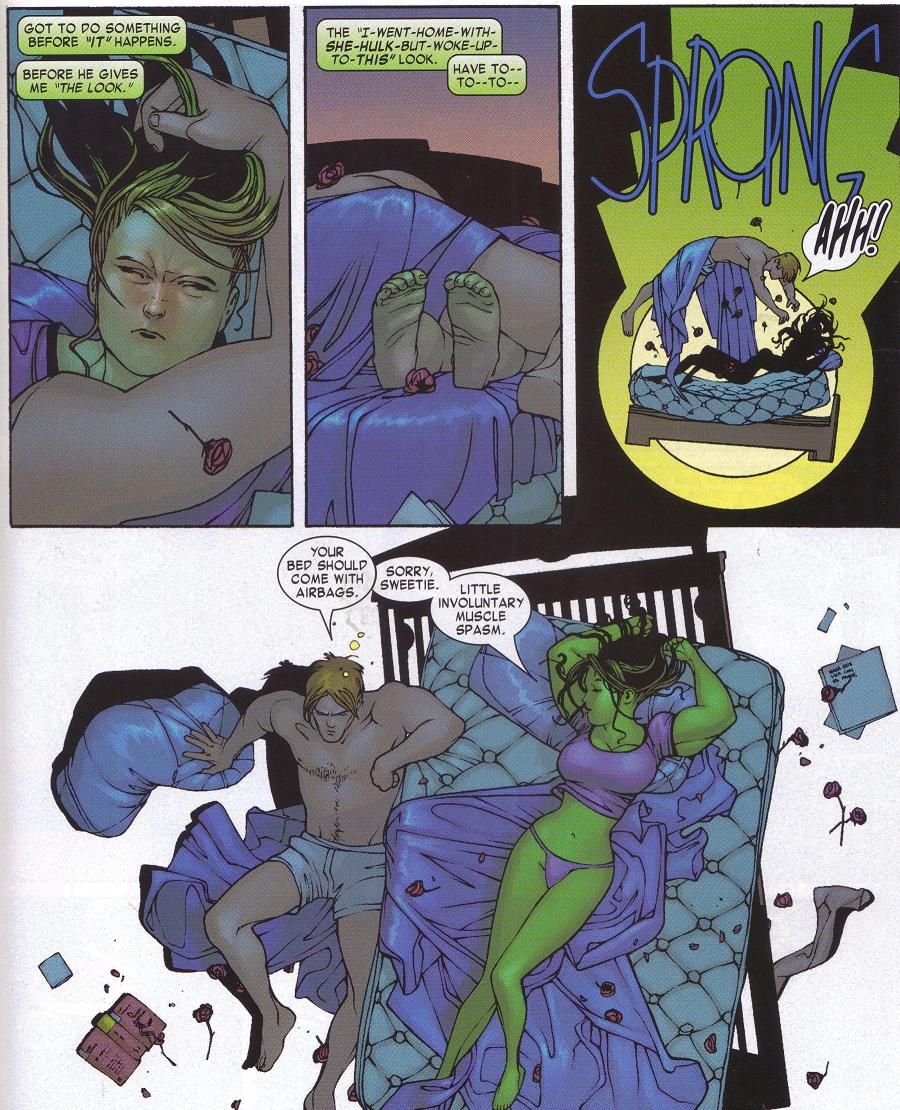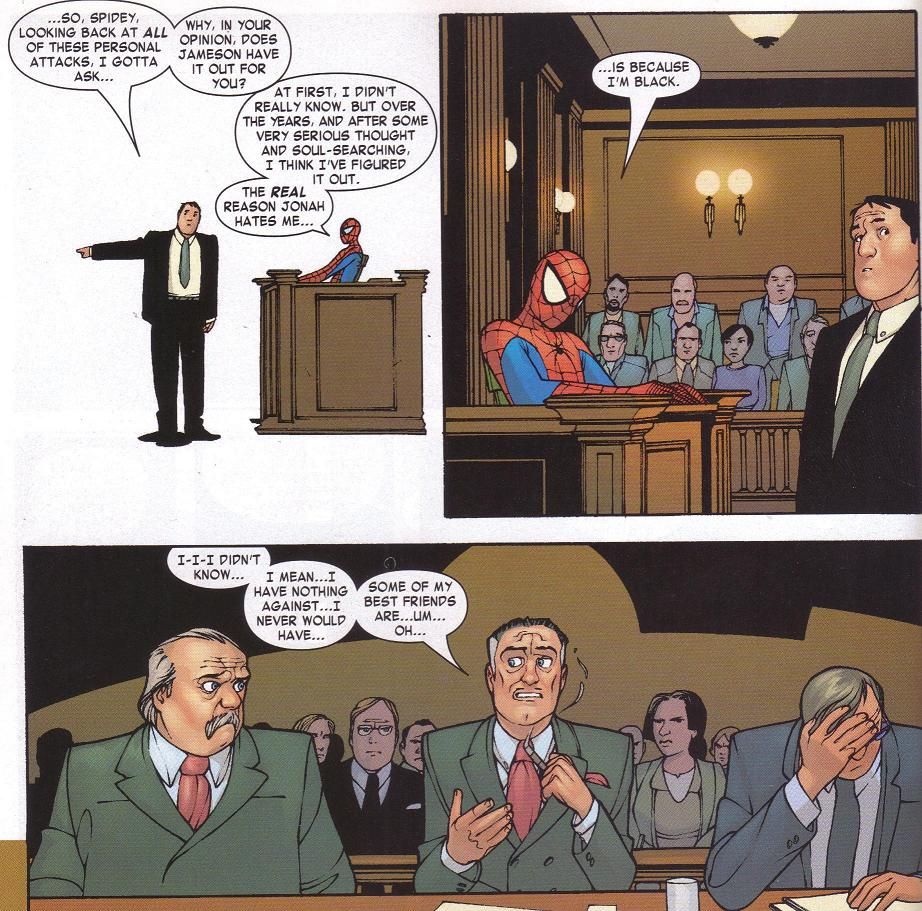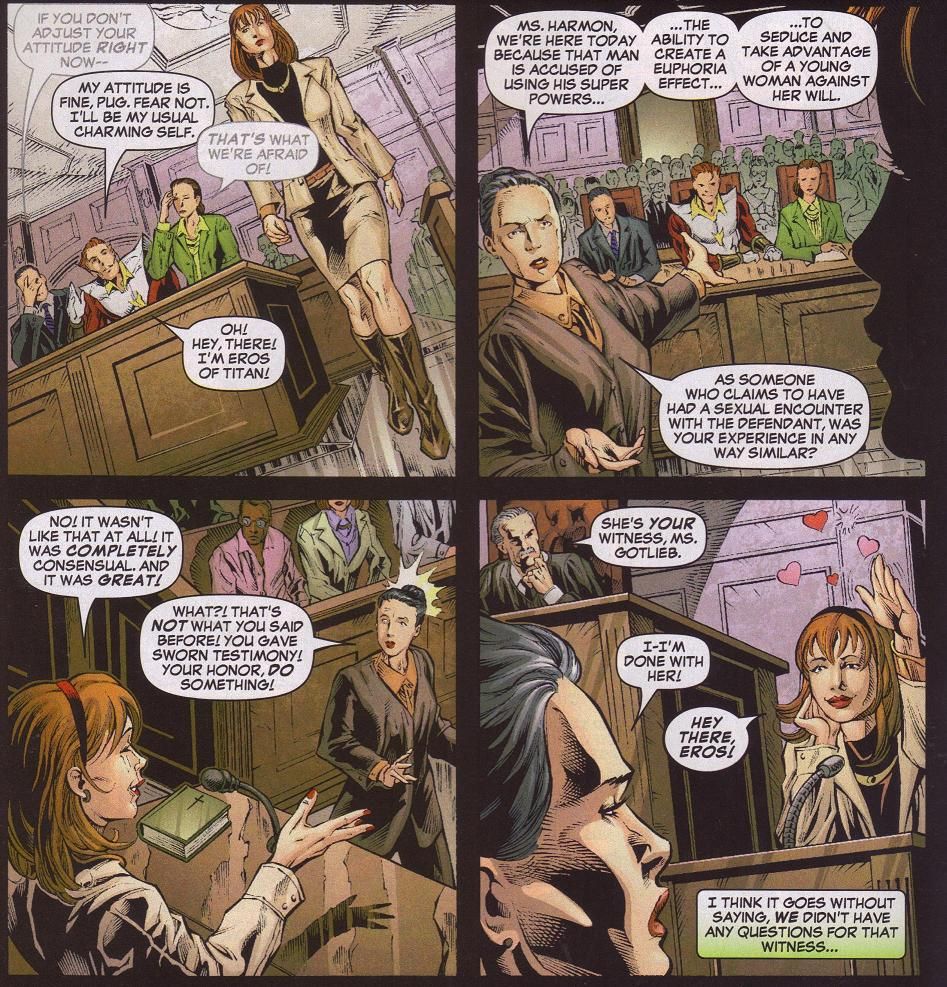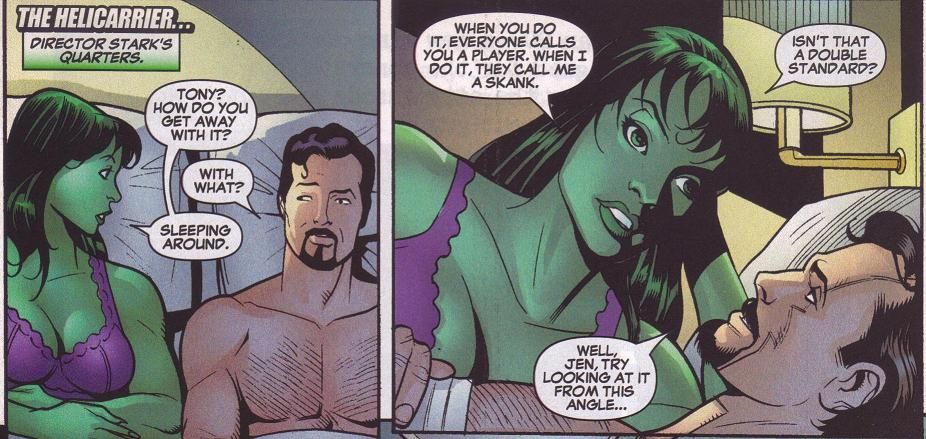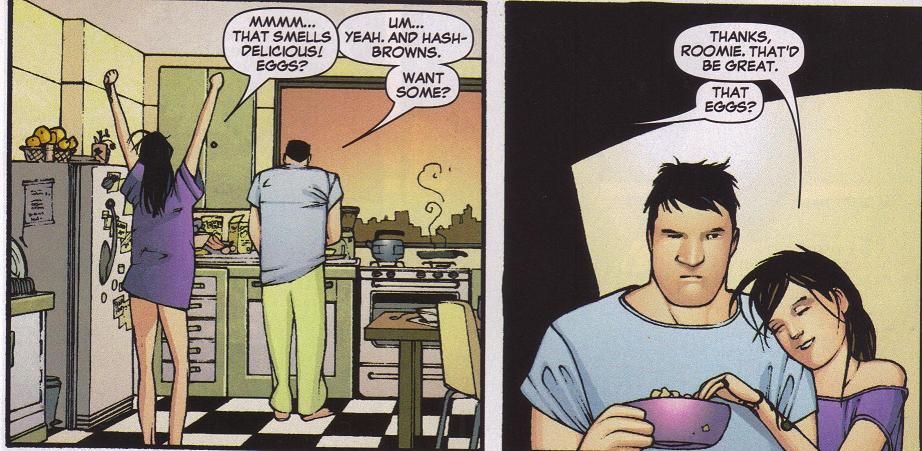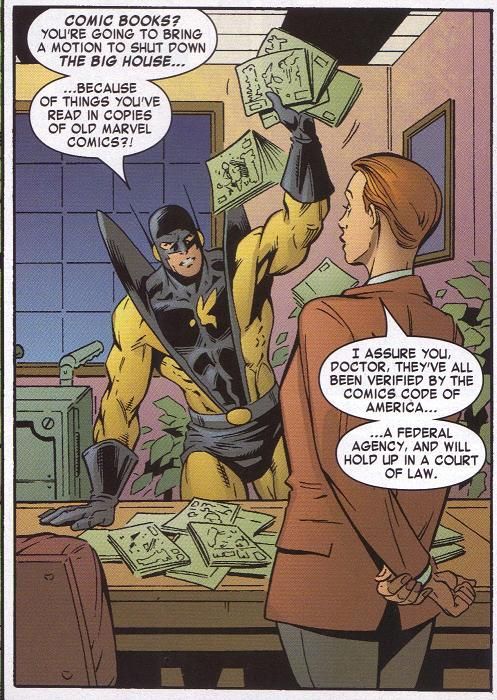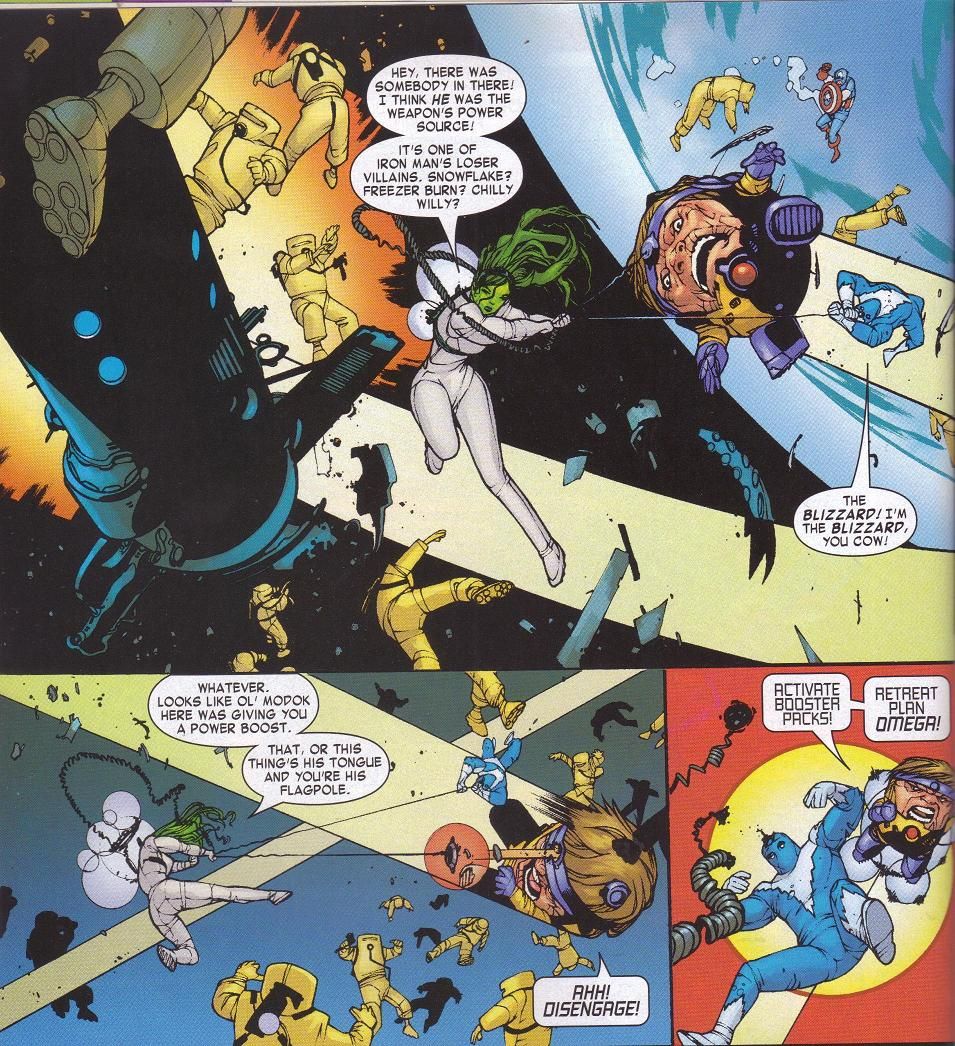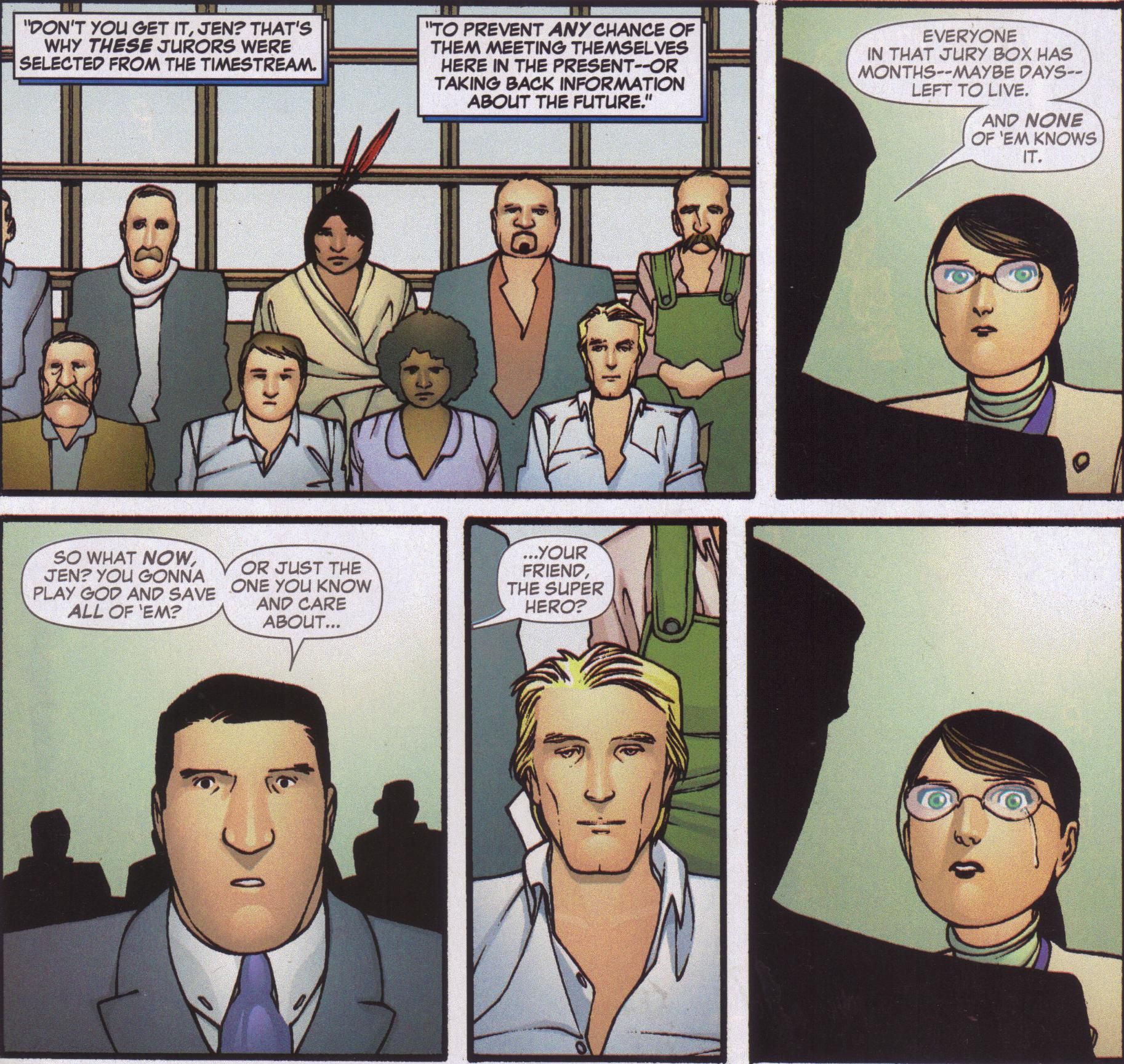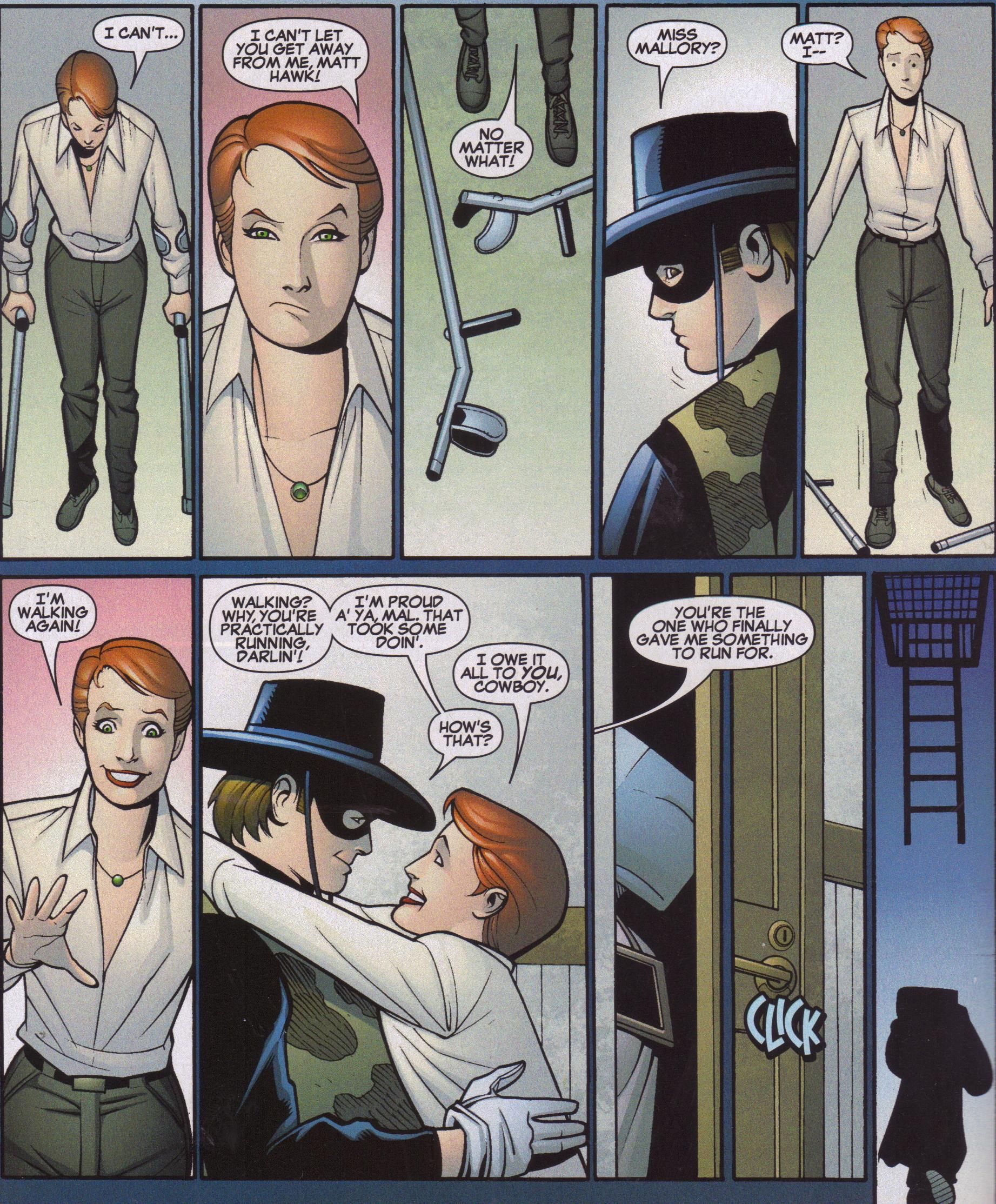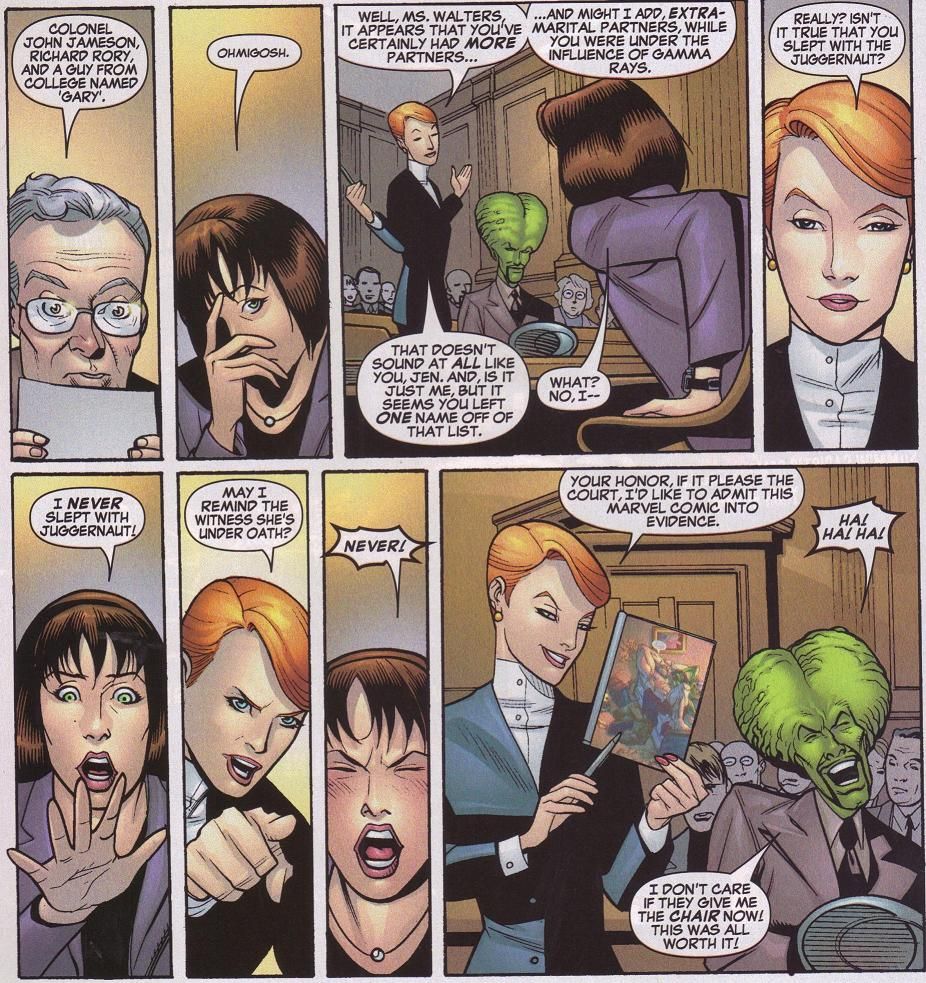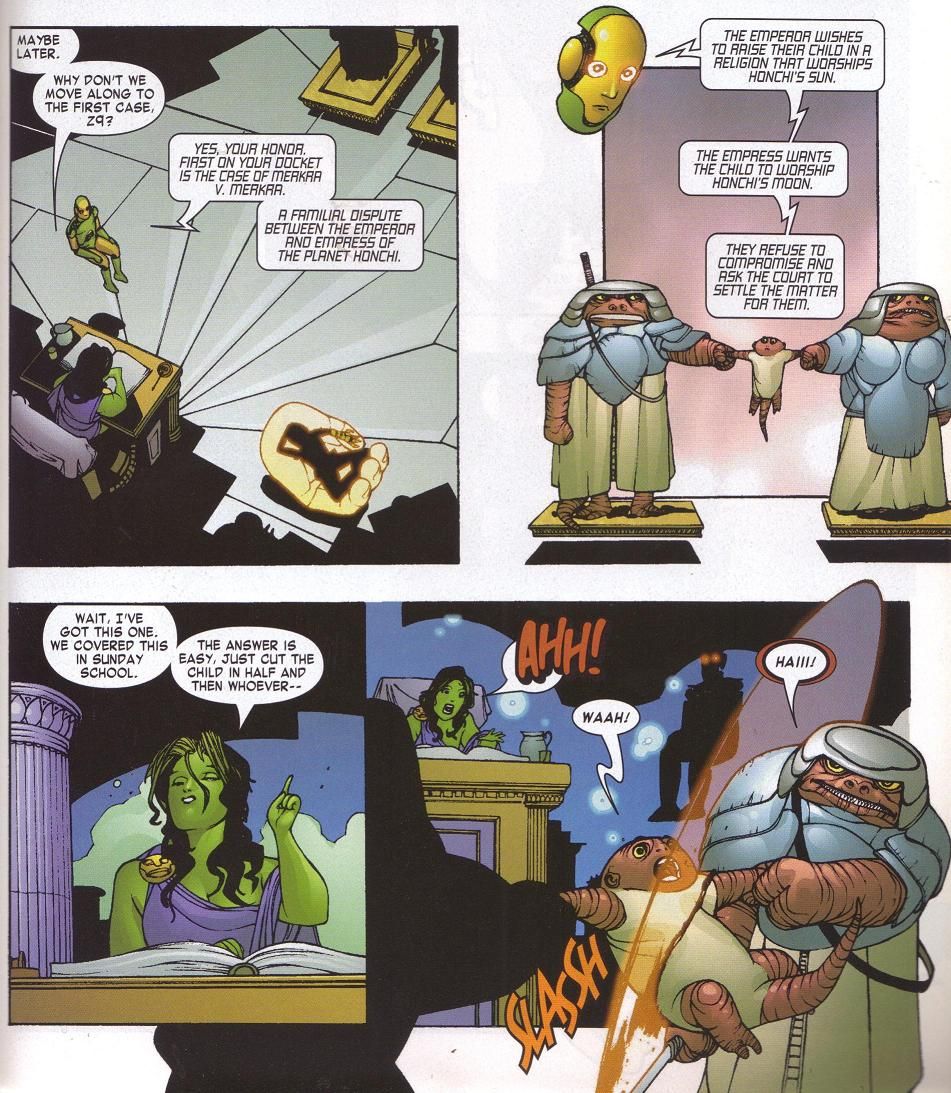The Dan Slott issues, basically. Yes, I know theoretically they're not "volume 3" and "volume 4," as one of the characters helpfully explains, but I can still call them that!
She-Hulk by Dan Slott (writer), Ty Templeton (writer, vol. 4 issues #19-21), Juan Bobillo (penciler, vol. 3 issues #1-4, 7-8; vol. 4 issues #1-3, 5), Paul Pelletier (penciler, vol. 3 issues #5-6, 9-12; vol. 4 issue #3), Scott Kolins (artist, vol. 4 issues #3-4), Mike Vosburg (artist, vol. 4 issue #3), Amanda Conner (penciler, vol. 4 issue #3), Ron Frenz (penciler, vol. 4 issues #3, 9), Mike Mayhew (artist, vol. 4 issue #3), Don Simpson (artist, vol. 4 issue #3), Lee Weeks (artist, vol. 4 issue #3), Eric Powell (artist, vol. 4 issue #3), Tom Grummett (penciler, vol. 4 issue #3), Will Conrad (artist, vol. 4 issues #6-7), Paul Smith (artist, vol. 4 issues #8-9), Rick Burchett (penciler, vol. 4 issues #10-21), Marcelo Sosa (inker, vol. 3 issues #1-4, 7-8; vol. 4 issues #1-3, 5), Tom Simmons (inker, vol. 3 issue #5), Don Hillsman (inker, vol. 3 issue #5), Roland Paris (inker, vol. 3 issue #6), Rick Magyar (inker, vol. 3 issues #9-12; vol. 4 issue #3), Jimmy Palmiotti (inker, vol. 4 issue #3), Joe Sinnott (inker, vol. 4 issue #3), Sal Buscema (inker, vol. 4 issues #3, 9), Gary Erskine (inker, vol. 4 issue #3), Joe Rubinstein (inker, vol. 4 issue #9), Nelson (inker, vol. 4 issue #10), Cliff Rathburn (inker, vol. 4 issues #11-21), Chris Chuckry (colorist, vol. 3 issues #1-4), Avalon Studios (colorist, vol. 3 issues #5-6), Dave Kemp (colorist, vol. 3 issues #7-12; vol. 4 issues #1-3, 5-16), Wil Quintana (colorist, vol. 4 issue #4), Andy Troy (colorist, vol. 4 issues #17-21), Dave Sharpe (letterer, vol. 3 issues #1-12; vol. 4 issues #1-21), and Chris Eliopoulos (letterer, vol. 3 issue #10).
Published by Marvel, 33 issues (volume 3 #1-12, volume 4 #1-21), cover dated May 2004 - April 2005 (volume 3) and December 2005 - October 2007 (volume 4).
Some SPOILERS, but not too many. They're more fun to discover yourself!
She-Hulk is an odd comic, starring a character who has always been a bit odd, even before John Byrne got his hands on her. This iteration, which stretched over two "volumes" and survived one cancellation, never sold particularly well, but it had a lot of charm and helped (along with the Spider-Man/Human Torch mini-series) to establish Slott as the go-to guy for light-hearted superhero comics.
But it has a weird tension in it, too, because there are some problems with the way it's written. Some of it is out of Slott's control, of course - the book is far too tied into the bigger Marvel events of the day, because She-Hulk's status as an Avenger meant that she couldn't escape the baleful hand of Mr. Bendis during these halcyon days. So Slott's always having to write around the big events - Bendis's destruction of the Avengers, which turned She-Hulk into a rampaging monster; Civil War; and finally the whole World War Hulk thing (which, yes, wasn't a Bendis joint, but it stemmed from a Bendis idea). It makes the book far more disjointed than if Slott was able to stick to his own plotting. Some of the issues with the book are Slott's alone, though. He likes to take shots at some of the readers of the comic, which seems counter-intuitive. He picks on the idea of waiting for trades, for instance, because if you don't buy the single issues, there might never be a trade. Well, sure, but then Marvel shouldn't collect everything in trade, make them cheaper, and get rid of the advertisements, should they? Slott seems awfully defensive about some of the criticism leveled at him and the comic, and while I understand it (there's something to be said for picking on people who insist on such tight continuity in their superhero comics), it seems odd to bite the hand that feeds you so blatantly. This was before Slott got death threats for his changes to Spider-Man, so perhaps he's just prescient, but it still seems like a strange attitude to take.
Because She-Hulk is a delightful comic in many ways. Ever since Byrne decided that Jen knew that she was in a comic book, the book has often been quite good, as that one decision by Byrne allowed writers and readers to not take the character quite so seriously, and that leads to writers doing some nice work with her.
Slott comes up with a brilliant hook, one that pretty much doomed the book from the start in the superhero-centric world of American mainstream comics: He played up the fact that Jen is a lawyer, gave her a job at the excellently-named Goodman, Lieber, Kurtzberg, and Holliway law firm, and had her new boss demand that she only appear at work and in court as Jennifer Walters. The only problem with this amazing idea is that Slott then had to come up with stories where She-Hulk was needed. GLK&H had opened a new section of their office dealing with "superhero law" (not an original idea, but still pretty good), so She-Hulk was often needed, but the best parts of the book are when Jen takes center stage. Of course, that means superhero readers aren't getting superheroing, and this tension is never quite resolved by Slott in the course of the run. But it's still a great idea (it also means the Slott can use Marvel comics as legal documents, in another brilliant move). It leads, early on in the series, to some excellent single-issue stories that fit well into the absurd Marvel Universe: Issue #2 is about a man who gains incredible powers in an industrial accident but wants to sue the company because his life doesn't turn out as well as we might expect; in issue #3, a ghost is allowed to testify at his own murder trial after Jen points out that he might come back to life, as hundreds of people have in the Marvel Universe; Spider-Man sues J. Jonah Jameson for libel in issue #4; Jen becomes a judge for the Living Tribunal in issue #7 and figures out a clever way to defeat the Champion in issue #8. In the second volume of this series, Jen helps solve a time-traveling murder mystery in issues #1-2 and defends Starfox against sexual harassment/coercion charges in issues #6-7. But then the book goes a bit sideways and never really recovers.
Issue #8 is a "Civil War" tie-in, and then John Jameson, who's been dating Jen, proposes to her. The readers know (but the characters don't) that Starfox gave John a bit of a whammy in issue #6, causing him to fall even more deeply in love with Jen than he already was. She accepts his proposal, but she finds out about Starfox's machinations soon after and doesn't know what to do about it. Then she gets drafted into S.H.I.E.L.D. and the book drifts even further afield. Slott brings it back around pretty well, but the final 14 issues of the second volume are a far cry from the first 19 issues of the run. So why shouldn't you just stop reading at the end of the Starfox trial?
Well, Slott is a good writer, and while the brilliance of the plots isn't on display in the final half of the run, he does do some nice work. Slott is a fine inheritor of the old-style Marvel writing (also known as the "Claremont Method"), which means that this run reads like a long soap opera. That might seem like a criticism, but in serialized comics, it can be a big strength, and in She-Hulk, it certainly is (for the most part). Placing Jen in the law office means that Slott can come up with a lot of different personalities for her to bounce off of, and he does a good job with it. He also plays up her recent status as someone who has a bunch of sexual partners, as in the first issue of the book she's asked to leave the Avengers mansion because her partying is too crazy. Slott, interestingly enough, doesn't turn She-Hulk into too much of a sex-crazed partyer, but because she has more than one sexual partner during the run, he's able to comment on how a man can get away with the things she does but not a woman. Slott doesn't beat us over the head with the comparison, but it's there, and it's unfortunate that we're still not over this kind of thing. He also plays up the difference between Jen and She-Hulk, something not many writers had bothered to do before this. Jen is more insecure than She-Hulk, but because she believes that no one pays attention to her as Jen, people underestimate her.
Slott goes back and forth with the idea of She-Hulk not being able to change to Jen and Jen not being able to change to She-Hulk, but those ideas never go too far. What's interesting is that the men in her life who don't really care about her obviously like She-Hulk more, because in that form, Jen has no inhibitions and she's generally a lot more fun. The two men who really care about her - John and Pug - want her to be Jen more often, because they can actually have a conversation with her when she's Jen. It's actually quite interesting how Slott sets this all up, because one could make the argument that John and Pug prefer a "weaker" version of the character, as opposed to the dominating personality of She-Hulk. It's an interesting conundrum - are John and Pug intimidated by She-Hulk because they don't want to be the lesser part of the relationship? Slott doesn't explore this too overtly, but it's definitely there, and it provides some nice tension within the generally light-hearted series.
Jen's rival at the law firm is Mallory Book, another tremendous character. Book is an excellent lawyer, and she needles Jen about her abilities as a lawyer and her reliance on the She-Hulk side of her personality. Book also gets a romantic sub-plot, as at the end of "volume 3" she's injured when Titania attacks the law firm, and Awesome Andy (the old Fantastic Four villain) helps her work out to get back in shape and falls in love with her. She only has eyes for the Two-Gun Kid, who joins the cast in issue #5 of volume 4, but Starfox puts the whammy on her too and causes her to fall in love with Andy.
When she finds out, things get bad, and Andy leaves the company and Mallory ends up with Two-Gun Kid. Meanwhile, Slott introduces Augustus Pugliese ("Pug"), who becomes Jen's best friend even though he really pines away for her (and it becomes worse when he and Jen are forced to room together and John keeps coming over to spend the night). While that trope is extremely over-used in fiction, it can be done well, and Pug is an interesting character. He always tries to say something to Jen, but the moment is never right, and even when he finds out that Starfox zapped John, he doesn't want to hurt Jen by confronting them. As this is a modern comic, Slott doesn't use thought balloons, which makes his use of Pug more effective - if this comic had been done in the 1970s or 1980s, the writer would have had Pug moaning in his thoughts incessantly about the torch he's carrying for Jen, but Slott has to rely on timing and the artists to express what Pug is thinking. It's easy to know how he feels - this is a stereotype, after all - but because Slott doesn't resort to Pug explaining it all to the audience through thought balloons, it feels more real. One of the best things Slott does with Pug is allow him to move past his feelings for Jen but still remain her friend.
He doesn't become a villain or declare himself and get rejected or anything else that could turn into a comic book cliché. He simply accepts that it's not going to happen and decides to be friends with Jen. It's a nice turn for the character.
There are a lot of other subplots, of course, but it's more fun to discover them as you go. Slott is adept at keeping the tone light, even though the book is never quite as jokey as it could be. The Starfox story feels a bit too heavy for the book, even though it leads to a classic Shakespearean trope of people falling in love with people they might not otherwise (at one point, Mallory and Two-Gun Kid see a performance of "A Midsummer Night's Dream," which is a bit too on-the-nose for Slott). Slott does tell some very funny stories and some good jokes, but the book never quite turns into a situation comedy, which is for the best. Slott understands that some situations in life are funny even if real emotions are involved, and he's good at contrasting the emotions the characters are feeling, which might cause them some pain, and the absurdity of the situation. As an example, in the very first issue, Jen is fired from her job in the district attorney's office (with a hilarious cameo by DA Blake Tower), and she's feeling blue. She goes to get drunk (which she can't do, but she's still drinking), and the Blizzard busts in and tries to cause trouble. Instead of fighting him, She-Hulk drinks him under the table and tells the bartender to call the cops. It's a funny situation, but Slott makes sure to recognize that Blizzard is drinking for a poignant reason - he's third-rate villain who will never amount to anything in the world. It's a funny moment, and Slott does a nice job with it. Throughout the run, he never forgets that these people might be superpowered, but they have human emotions, and he walks a good line between making fun of them and sympathizing with them. He never treats them as plot devices, even when the plot takes over a bit too much in the comic. That's why this is a more interesting comic than a lot of superhero books, because Slott gives us a soap opera, but he doesn't force the characters into the plot. He lets the characters, for the most part, determine the plot.
Even when She-Hulk gets recruited into S.H.I.E.L.D., which has nothing to do with Slott but everything to do with the greater Marvel Universe, he doesn't forget that She-Hulk doesn't know what happened to her cousin, and when she finds out, her familial emotions take over. Slott's good enough that he doesn't forget that characters drive the story, not the other way around.
She-Hulk is a bit disappointing in the art department, which has been somewhat of a feature of Big Two superhero books for several decades now, so perhaps we shouldn't hold it against them. It's not disappointing for the talent, as the two artists who bookend the series do quality work, but for the fact that nobody can stay on the book too long. The fact that Rick Burchett was able to draw 12 consecutive issues of the series is stunning, frankly. Juan Bobillo is probably most associated with the comic, but he only drew 10 issues. His work is quite good, though, with the exception of his rendition of the Thing, which is possibly the worst drawing of a Marvel character in history. Bobillo has a quirky style that highlights the slight weirdness of Slott's scripts, and he does a superb job with both She-Hulk and Jennifer, as his Shulkie is a buxom giant, a gorgeous zaftig woman with beautifully messy hair, while his Jen is mousy and conservative. Bobillo's cartoony artwork makes the fantastic fit well into the law firm, and it helps make the mundane Marvel Universe sit uncomfortably next to the more amazing superhero world. It's what the book needs, because Slott is trying to show that superhero problems can be solved in the most down-to-earth ways, by using regular law. Bobillo is also superb at body language, as slight changes to his characters' eyes or mouths convey great shifts in emotion. This is especially true with Jen, because Bobillo gives her large eyes and a small mouth, so we can read a great deal when her eyes move around and when Bobillo draws her mouth slightly larger. There's a tremendous sequence in issue #2 of the second series when Pug is trying to convince Jen not to warn Hawkeye that he's going to die (he was brought to the present as part of a jury, and obviously he doesn't know he's going to be killed by a Mr. Bendis). Look at how Bobillo turns a steely Jen who's determined to warn her friend into someone who realizes how selfish she's being, and Slott doesn't even need any words:
The problem with the other artists on the book, including Burchett (who's closest to Bobillo in tone) is that they're perfectly good "superhero" artists, so the book feels more like a standard superhero book when they draw it. Pelletier is a solid penciler, but Slott wisely gives him "superhero" stories to draw - the first is about a breakout at a maximum-security prison, so there are a bunch of supervillains, and the second is about Titania and her hatred of She-Hulk. Both are good stories, but they lack the spark Bobillo brought to the book. Bobillo would have made the sexual coercion story about Starfox a bit lighter so that it wouldn't sit so uncomfortably in the middle of the run, but Will Conrad doesn't really bring too much to the table. Nor does Paul Smith, unfortunately. He does, however, get to draw a very funny page when it's announced that She-Hulk married John Jameson:
The shift from Smith's somewhat staid pencils to Burchett's more lively art isn't apparent at first, as Burchett's first issue is heavily over-inked by "Nelson," perhaps to match it more to Smith's work. However, Cliff Rathburn's finer line in issue #11 is a good fit for Burchett's angular work, and the art becomes a better fit for the book. Burchett isn't quite as cartoony as Bobillo is, but he's still more in that tradition than the more "realistic" style of Pelletier or Conrad, and his work makes the characters far more arch than they ever have been, especially Mallory, who becomes the most pleasing character visually in the book when Burchett takes over. He's wonderful at cocking Mallory's eyebrow or twisting her lip to express all sorts of emotion, and he's also very good at showing just when her façade breaks down, as it does when she thinks the Two-Gun Kid is going to leave her:
The biggest problem with Burchett's work is that She-Hulk and Jen look too much alike. She-Hulk isn't as massive as and Jen isn't as shrunken when Burchett draws them as when Bobillo drew them.
By the time Burchett came on board, Slott was putting her into more superheroic situations, so the contrast isn't as necessary, but in the final few issues, when Slott is wrapping things up and Jen is featured more, it doesn't work as well. When Mallory interrogates Jen about her and She-Hulk's sexual history, the humor of She-Hulk having far more partners than Jen isn't heightened enough by the artwork. Still, Burchett does some good work, and his clean style helps keep the superheroing from feeling too dull and predictable. Slott's writing isn't bad during this final year of the book, by any means, but a more "superheroic" artist like Pelletier might not have been able to keep it light.
If I sound like I'm damning with faint praise, I don't mean to. This series is fun to read, and Slott's efforts to make it unique even though it kept getting dragged into the main narrative of the Marvel Universe circa 2004-2007 are impressive. The unfortunate side effect of this is that the second half of the book isn't as sparkling as the first half, but Slott still manages to weave some very interesting stories and make sure that the characters remain front and center. I don't want to write too much more simply because it's fun to follow where the story goes and how Slott manages to fit so much into the book that makes sense within Marvel continuity. That he is a bit defensive about his writing is weird and a bit annoying, but it does lead to some funny bits within the context of the comic.
Meanwhile, the two main artists turn the book into a heartfelt comedy, treating the characters with respect but allowing us to have some fun with them, too.
She-Hulk isn't a perfect comic, of course. It does show, once again, that creators who have a singular vision can make some fascinating comics and that it would be better if those creators weren't forced to tie their books so tightly into a shared world view of the publishing universe. But it also shows that those books that do tie into a common world view sell better, a vexatious notion that is more annoying than anything. Slott had a great idea and, for the most part, was able to work within that idea. When he drifted away from it, the book became less interesting, but by then, his character work was strong enough for sustain the title. She-Hulk never sold well, but it's still a gem.
There are five trade paperbacks collecting this entire run. If you really don't want to get them all, the first three collect through issue #5 of the second series, which is the last Bobillo issue and is right before the Starfox trial begins. Those are the best ones, and while I would still recommend the entire series, I don't love the final two trades as much as the first three. But that's just me!
We're not even close to making it through "S," so be ready for another series that begins with that iconic letter! In the interim, feel free to check out the archives!

